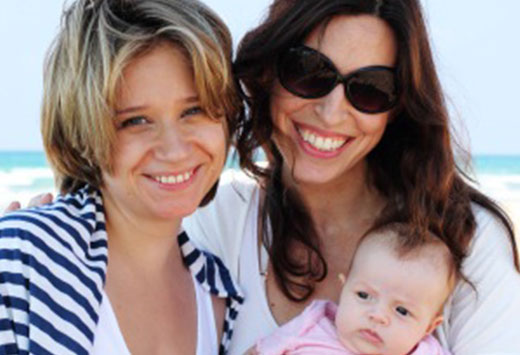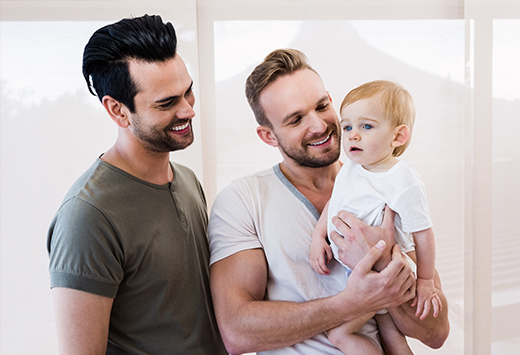No matter how you choose to adopt — domestically, LGBT adoption, or internationally — one thing remains the same: the need to bond with your new arrival. Many adoptive parents can feel extra pressure to bond and form attachment with their baby, which can often making forming that first connection more difficult. Here are a few tips to make bonding with your adopted child much easier.
-
Baby Wearing: If you’ve adopted a newborn, then baby wearing can be a great way to form a connection. When at home, try skin on skin contact. If your child is a little older then carry them when possible, as this will create increased physical contact to you.
-
Fulfilling Basic Needs: In the early days following adoption, you or your partner should be the ones responding to your child’s needs, not any other parties such as grandparents. Feeding, changing, or comforting your new arrival will help your child to recognise you as their parents as opposed to anyone else in your support circle.
-
Eye Contact: Seek to give your child as much eye contact as possible, but don’t try to force them to reciprocate. Give your child milk in a bottle and give loving eye contact to them, stroke their cheek, and try to pour all the love you have for your child into your interaction.
-
Peek-a-boo!: Playing peek-a-boo with your child can be a great way to form a bond with them. This process of disappearing and reappearing helps to reassure your child that you are still there for them even if they cannot physically see you.
-
Family Photo: This works at any age, and can be great for babies when stuck on the ceiling or attached to their mobile. Placing a family photo somewhere in your child’s room where it will be in view when they are falling asleep or waking will help cement the bond your adopted child has to you. They’ll become reassured when seeing you or your partners face, and will be comfortable in your presence.
-
Talking about Adoption: This can begin at an early age and can be used to reassure a child that they are wanted while also informing them of their own personal history. This may first start with comments or picture books. In cases of LGBT adoption this can be a good time to start to familiarize your young child with the differences in their family dynamic.
-
Co-Sleeping: Sleeping in the same room as your baby can help them get used to being in close proximity to you and provide reassurance of your constant presence. It can also help you to hone your parental instincts.
-
Traditions: Bonds are formed and fortified over time, so starting traditions as a baby can be a great way to continue the bonding process as your child ages. Taking a photo in the same place every year can be a great keepsake for you and also a good way for your child to establish their personal history - something adoptive children can struggle with.
-
Communication: Babies get used to their birth mother’ voice while in the womb, so in the case of adopted children it is important to communicate with them even if they are too young to understand. Hearing your voice will help them to connect the sounds they hear with you, their parent.
-
Patience: Most importantly, relax and cut yourself some slack. Bonds don’t happen overnight and instead need to be built and worked up. Keep up the good work, and over time a strong bond between you and your baby will form.




